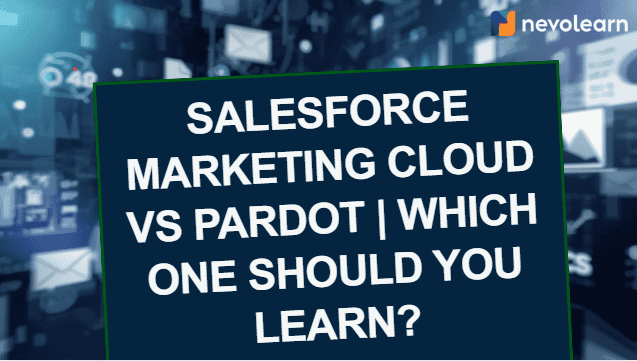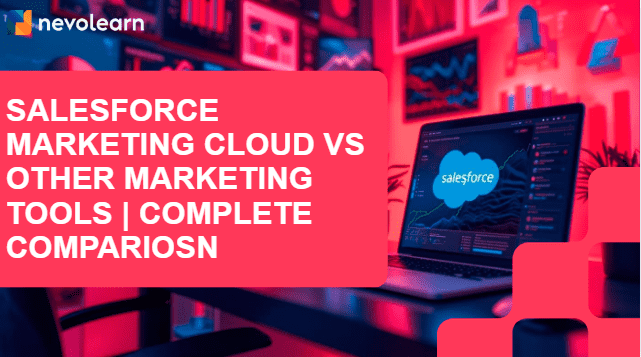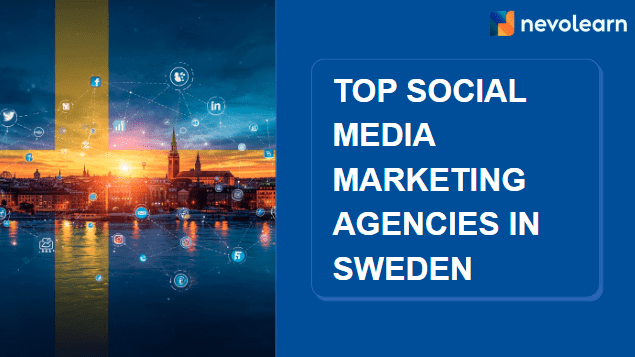
Up To 30% Off On All Courses*


 How to Align Sales and Marketing Using Salesforce Marketing Cloud
How to Align Sales and Marketing Using Salesforce Marketing CloudOne of the biggest challenges modern businesses face is the disconnect between sales and marketing teams. Marketing often generates leads but struggles to ensure those leads are high quality, while sales frequently complains about receiving leads that are not ready to convert. This lack of alignment creates friction, wasted resources, and ultimately, lost revenue opportunities.
In today’s competitive landscape, businesses cannot afford this gap. Customers expect seamless experiences across all touchpoints, from their first interaction with a brand to post-purchase follow-ups. If sales and marketing operate in silos, delivering this consistency becomes nearly impossible. That’s where learning Salesforce Marketing Cloud (SFMC) becomes essential.
Salesforce Marketing Cloud is not just a marketing automation platform — it is a powerful ecosystem that integrates with Salesforce Sales Cloud, enabling a unified approach to customer engagement. By using AI, automation, and robust data management, SFMC helps marketing and sales teams work in harmony. This ensures that marketing generates qualified leads, sales nurtures them effectively, and both departments collaborate toward a common goal: driving growth and customer satisfaction.
In this blog, let’s explore how Salesforce Marketing Cloud can align sales and marketing, with detailed strategies you can implement right away.
How to Align Sales and Marketing Using Salesforce Marketing Cloud
1. Centralizing Customer Data
Alignment starts with a single source of truth. Salesforce Marketing Cloud integrates seamlessly with Sales Cloud and other data sources to centralize customer information. Instead of marketing and sales relying on separate databases, both teams access a unified 360-degree customer view. This allows marketing to design campaigns based on accurate insights while sales gets real-time visibility into customer behavior. For example, if a prospect interacts with an email campaign, sales can see that activity and tailor their pitch accordingly. A shared data environment ensures consistency and eliminates miscommunication.
2. Lead Scoring and Qualification
One of the major pain points in sales and marketing misalignment is poor lead quality. SFMC uses AI-driven lead scoring models (powered by Salesforce Einstein) to evaluate leads based on engagement, demographics, and behavioral data. This ensures that only qualified leads are passed to sales, saving time and increasing conversion potential. Marketing can focus on nurturing colder leads until they’re ready, while sales prioritizes hot prospects. This balance improves efficiency and creates trust between the two teams.
3. Automated Nurture Journeys
Not all leads are ready to buy immediately. With SFMC’s Journey Builder, marketing teams can automate personalized nurture campaigns for prospects at different stages of the funnel. These campaigns deliver relevant content — from educational blogs and webinars to targeted product offers — based on customer behavior. Sales teams benefit because prospects entering the pipeline are already more informed and engaged. Automation reduces manual workload and ensures that no lead falls through the cracks.
4. Real-Time Alerts for Sales Teams
Salesforce Marketing Cloud provides real-time engagement data, such as email opens, clicks, and website visits. Sales teams can receive instant notifications when a prospect interacts with high-intent content (like a pricing page or demo request). This allows sales reps to engage prospects at the right moment, increasing the chances of conversion. Marketing, on the other hand, gains insights into which content drives action, helping them refine campaigns for better lead generation.
5. Personalized Sales Enablement
SFMC empowers marketing to create personalized content libraries that sales teams can leverage in their conversations. This includes tailored email templates, case studies, brochures, and presentations. Instead of creating ad-hoc content, sales reps can use marketing-approved assets that maintain brand consistency. The personalization capabilities of SFMC also mean that content can be dynamically customized based on customer data, making outreach more relevant and effective.
6. Closed-Loop Reporting and Analytics
Salesforce Marketing Cloud and Sales Cloud integration enables closed-loop reporting, where both teams can track how marketing efforts translate into sales outcomes. Analytics dashboards show campaign performance, lead conversion rates, and ROI. This transparency ensures accountability and allows both teams to identify bottlenecks. For instance, if marketing campaigns are generating leads but sales conversion is low, teams can collaboratively refine the strategy. Data-driven insights remove guesswork and encourage continuous improvement.
7. Aligning Goals and KPIs
Technology alone cannot bridge the sales-marketing gap — alignment requires shared goals. With SFMC’s reporting tools, businesses can set unified KPIs such as pipeline growth, lead-to-customer conversion, and revenue attribution. When both teams track the same metrics, collaboration becomes natural. SFMC ensures that performance data is visible to both departments, fostering a culture of joint ownership and accountability.
8. AI-Powered Predictions for Smarter Strategies
Salesforce Einstein brings predictive intelligence to the alignment process. It can forecast customer behavior, identify accounts most likely to convert, and recommend the next best actions. Marketing uses these insights to design targeted campaigns, while sales applies them to prioritize outreach. Predictive AI ensures that both teams focus their energy on high-value opportunities, maximizing efficiency and results.
9. Cross-Channel Customer Engagement
Customers engage across multiple channels, from email and SMS to social media and websites. SFMC ensures consistent, cross-channel messaging that reflects both sales and marketing strategies. For instance, marketing may run an awareness campaign via email while sales follows up with personalized calls referencing the same content. This synchronized approach delivers a seamless customer experience, strengthening trust and driving conversions.
10. Scalability for Growing Organizations
As organizations grow, aligning sales and marketing becomes more complex. SFMC provides the scalability needed to manage large datasets, multiple campaigns, and growing sales teams without losing alignment. AI and automation ensure that personalization remains intact at scale, while shared data and analytics keep both teams focused on the same goals. This makes SFMC an ideal platform for startups scaling fast as well as large enterprises managing global sales and marketing operations.
Conclusion
The alignment of sales and marketing is no longer optional — it is a strategic necessity for businesses aiming to thrive in a customer-first world. Disconnected teams create inefficiencies, misaligned messaging, and poor customer experiences. Salesforce Marketing Cloud provides the perfect solution by integrating data, AI, automation, and analytics into a unified ecosystem where sales and marketing work hand in hand.
By centralizing customer data, implementing lead scoring, automating nurture journeys, and enabling real-time collaboration, SFMC helps break down silos that traditionally hold back organizations. The platform not only improves lead quality and conversion rates but also fosters a culture of transparency, accountability, and joint success.
For businesses, this alignment translates into stronger customer relationships, more predictable revenue, and better use of resources. For customers, it creates seamless, personalized experiences that build trust and loyalty.
Ultimately, Salesforce Marketing Cloud is more than a marketing tool — it is a bridge that connects sales and marketing, ensuring both teams are aligned toward the same goal: delivering value and driving growth. Companies that leverage this alignment will not only stay competitive but also set new benchmarks in customer engagement.
Want to Level Up Your Skills?
EXPLORE BY CATEGORY
End Of List
No Blogs available Agile









